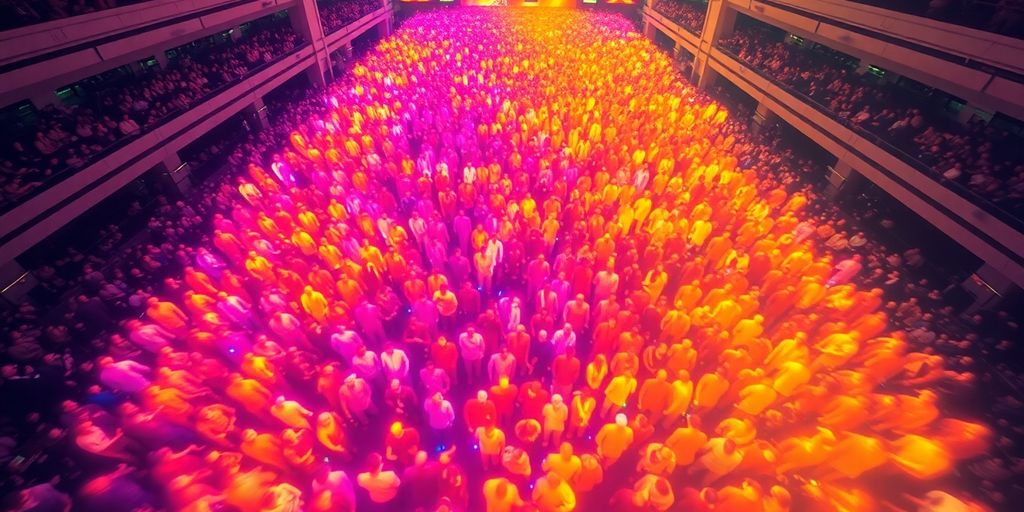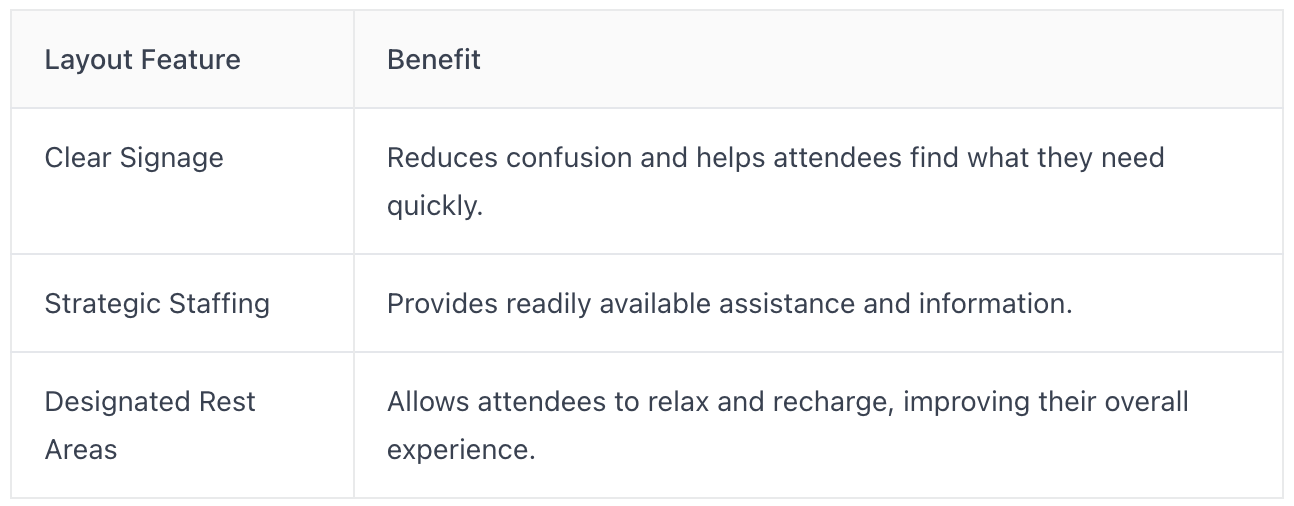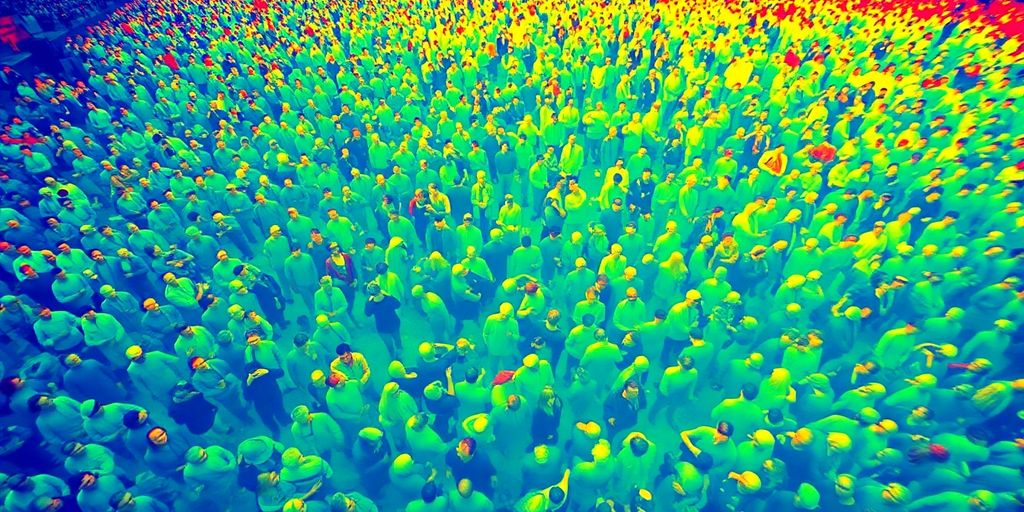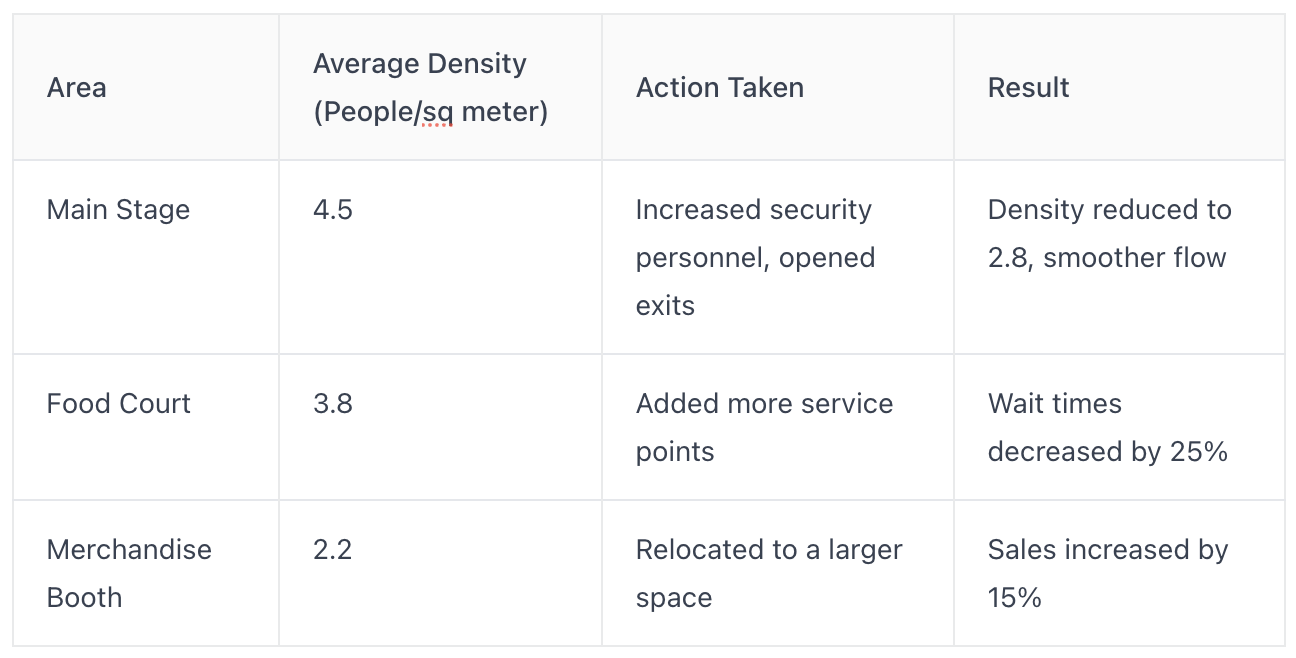Register as an organizer
Click the button below and finish your organizer registration, or fill out the form and we will be in touch to assist you.
.jpeg)
Knowing how people move through a space is super important for keeping everyone safe and making sure things run smoothly. Think about big events, busy stores, or even office buildings. If you can see where crowds are forming and how they're flowing, you can make smart choices to avoid problems. This article will look at how using something called "crowd heatmapping with mobile sensors" can really help with this, making places better for everyone.
Crowd heatmapping is changing how we understand and manage spaces. By using mobile sensors, we can get real-time insights into how people move and gather. This isn't just about knowing where people are; it's about using that information to make better decisions, improve safety, and create a better experience for everyone.
Heat mapping gives you a live look at crowd density. Instead of reacting to problems as they happen, you can see them coming and take action. Imagine a concert venue: a heat map can show you where people are bunching up near the stage or at the exits. With this info, you can open up more pathways or direct people to less crowded areas. This proactive approach is what sets heat mapping apart from older, reactive methods. It's about preventing issues before they become problems. For example, crowd density is crucial for safety.
AI takes crowd monitoring to the next level. It's not just about counting people; it's about understanding their behavior. AI systems can analyze movement patterns, predict where congestion will occur, and even identify unusual activity that might indicate a problem. This level of insight allows for more effective crowd management and a safer environment. Here's what AI can do:
AI-powered systems offer a deeper understanding of crowd behavior, enabling proactive interventions and optimized resource allocation.
AI isn't just for monitoring; it's for actively managing spaces. With real-time data, you can adjust layouts, change traffic flows, and even modify employee schedules to match peak traffic hours. This dynamic approach to space management ensures that your space is always working efficiently and effectively. It's about creating a space that adapts to the needs of the people using it, rather than forcing people to adapt to the space. This leads to better flow, reduced congestion, and a more enjoyable experience for everyone. For example, AI can help with visitor flow optimization.
It's easy to underestimate how much the layout of a space impacts people's experience. If attendees are constantly bumping into each other or can't find what they need, it reflects poorly on the event. Smart wayfinding and spatial planning are key to creating a smooth, enjoyable experience for everyone. It's about more than just putting up signs; it's about understanding how people move and designing spaces that make sense.
Imagine being at a huge event and feeling totally lost. That's where wayfinding comes in. It's all about giving people clear, easy-to-follow directions to where they need to go – restrooms, food, exits, you name it. Traditional signage is okay, but digital wayfinding is where it's at. Think interactive maps on screens that update in real-time. If one route gets crowded, the system can suggest another. It's about making movement within a venue easy. This is especially important for large venues where attendees can easily get disoriented. Effective indoor navigation technology can help disperse crowds and eliminate bottlenecks.
Good crowd control starts with good design. The way a space is arranged can either help people move smoothly or constantly put them in each other's way. Think about it: wide entrances, clear pathways, and strategically placed barriers can make a huge difference. Zoning is also a great idea. Section off food areas, entertainment zones, and restrooms to naturally spread people out. Funnel-shaped entrances are great for controlling large crowds, and separate lanes for staff or VIPs can keep things organized. These small changes can really improve the flow of an event.
Spatial planning is about organizing space beforehand to keep crowd flow smooth and reduce congestion during gatherings. It's not just about aesthetics; it's about functionality and safety.
It's easy to focus on the technical aspects of crowd management, but don't forget the human element. People react differently to different environments. Understanding basic psychology can help you design spaces that feel welcoming and intuitive. For example, people tend to follow the crowd, so creating clear visual cues can guide them in the right direction. Also, consider the placement of amenities. If restrooms are hidden away, people will get frustrated. If they're easy to find, it reduces stress and improves the overall experience. It's about creating a space that feels natural and comfortable to navigate.

Let's face it, nobody likes waiting in line or feeling like they're packed into a sardine can. That's where predictive management comes in. It's all about using data and technology to anticipate problems before they happen, making the whole experience smoother and more enjoyable for everyone. Predictive management is the secret sauce to turning potential frustrations into positive experiences.
Imagine knowing exactly how long you'll be waiting in line, or even better, not having to wait at all! Predictive queue management aims to do just that. By analyzing data like historical attendance patterns and real-time crowd density, event organizers can estimate wait times and implement strategies to minimize them. This could involve:
Instead of just standing around bored, attendees can use that time to explore other areas, network, or grab a snack. It's about transforming dead time into value time.
Crowd heatmaps aren't just for safety; they're also fantastic for optimizing flow and minimizing congestion. By identifying bottlenecks and high-traffic areas, event organizers can make informed decisions about layout adjustments, signage placement, and staffing allocation. For example:
Smart solutions like these can significantly improve the overall attendee experience by reducing frustration and making it easier to navigate the event space. It's about creating a comfortable and enjoyable environment where people can move freely and easily.
An optimized layout isn't just about minimizing congestion; it's also about improving customer service. When attendees can easily find what they're looking for, they're more likely to have a positive experience. This means:
Here's an example of how optimized layouts can impact customer service:

By focusing on these details, event organizers can create a more welcoming and user-friendly environment, leading to happier and more satisfied attendees. Consider using virtual venue to plan your next event. AI-enhanced apps can provide attendees with real-time updates on session availability.
It's not just about making things run smoothly; it's also about keeping everyone safe and following the rules. Advanced technology plays a big role in this, from spotting potential problems before they happen to making sure we're meeting all the necessary regulations. Let's take a look at how this works.
Being ready for emergencies is key, and technology can make a huge difference in how quickly and effectively we respond. Think about it: in a crowded place, knowing exactly where people are and how to get them to safety is crucial. Location-based alerts can guide crowds to the nearest exits, and features like Mapsted’s SOS feature can allow people to call for help with their precise location. This isn't just about saving lives; it's also about building trust by showing attendees that their safety is a top priority.
Overcrowding can lead to dangerous situations, so it's important to keep track of how many people are in a space at any given time. Real-time data from crowd heatmapping can help with this. Here's how it works:
By using real-time data, we can prevent overcrowding before it becomes a problem, ensuring a safer environment for everyone.
It's not enough to just collect data; we also need to be able to act on it quickly. Automated alerts and notifications can help with this. For example, if a fire alarm goes off, targeted alerts can be sent to people in the affected area, directing them to the nearest exits. Or, if a certain area is becoming too crowded, notifications can be sent to staff, alerting them to the situation. This kind of real-time updates can make a big difference in keeping people safe and informed.
Getting crowd heatmapping right isn't just about having the tech; it's about how you put it to work. It's about making smart choices that fit your budget, your space, and your people. Let's look at how to make it happen.
One of the biggest hurdles for many organizations is the cost of implementing new technology. The good news is that Mapsted's heat mapping solution doesn't require a ton of expensive hardware. This makes it accessible to a wider range of businesses and events. Instead of relying on complex setups, you can often use existing infrastructure and supplement it with strategically placed mobile sensors. This approach not only reduces upfront costs but also simplifies maintenance and deployment. Think about it: fewer devices to manage, less wiring, and a quicker setup time. It's all about getting the most bang for your buck.
Live data is the key to making informed decisions about your space. Crowd heatmaps provide a real-time view of where people are congregating, allowing you to identify bottlenecks and areas of congestion. With this information, you can quickly adapt layouts and traffic flows to improve the overall experience. For example:
By continuously monitoring crowd movement and making data-driven adjustments, you can create a more efficient and enjoyable environment for everyone.
Crowd heatmaps aren't just for optimizing physical space; they can also help you optimize your staffing levels. By analyzing traffic patterns, you can identify peak hours and allocate employees accordingly. This ensures that you have enough staff on hand to handle customer service, security, and other essential tasks during busy periods. Conversely, you can reduce staffing levels during slower periods to save on labor costs. It's all about using data to make smarter decisions about how you deploy your workforce.

Crowd heatmapping isn't just a cool tech idea; it's making a real difference in how spaces are managed. Let's look at some examples where it's being used to improve things.
Retailers are always looking for ways to boost sales, and store layout plays a big role. Heatmaps show where customers spend the most time, revealing popular product areas and dead zones. This data helps stores:
By understanding customer movement patterns, retailers can create a more engaging and efficient shopping experience, ultimately leading to higher sales and happier customers.
Event venues, from concert halls to conference centers, face the challenge of managing large crowds safely and efficiently. Heatmaps provide real-time data on crowd density, allowing venue managers to:

Even in office buildings, heatmapping can be useful. Companies are using it to understand how employees use office space, leading to better resource allocation and cost savings. This includes:
Heatmaps can also help with:
So, putting together a good crowd control plan these days really means mixing smart ideas with new ways of doing things. Things like how you set up a space, or trying to guess where lines will form, can really help keep things from getting crazy. And with tools like Mapsted's heat mapping, event organizers can see what's happening right now. That helps them make changes on the fly to keep everyone moving smoothly. It's a pretty solid way to manage crowds, for sure.
Crowd heat mapping is a cool way to see where people gather most in a space. It uses special tech to show 'hot spots' where lots of people are, helping organizers keep everyone safe and moving smoothly.
It helps in many ways! By seeing where crowds are, we can prevent areas from getting too packed, guide people to less busy spots, and even plan for emergencies better. It's all about making events safer and more fun.
Yes, it can. By understanding how people move, event planners can set up signs and paths that make it easy for everyone to find their way around, reducing confusion and long lines.
Absolutely! Knowing where crowds are helps businesses arrange their stores better, put staff where they're needed most, and make sure customers have a pleasant shopping experience.
It's pretty simple! It often uses small sensors or even your phone's Wi-Fi signals to figure out where people are. This info then creates a visual map showing crowd density in real-time.
It's super important for safety. If an area gets too crowded, it can become dangerous. Heat mapping helps us see these problems before they get out of hand, allowing us to act quickly and keep everyone safe.
More blogs
Click the button below and finish your organizer registration, or fill out the form and we will be in touch to assist you.